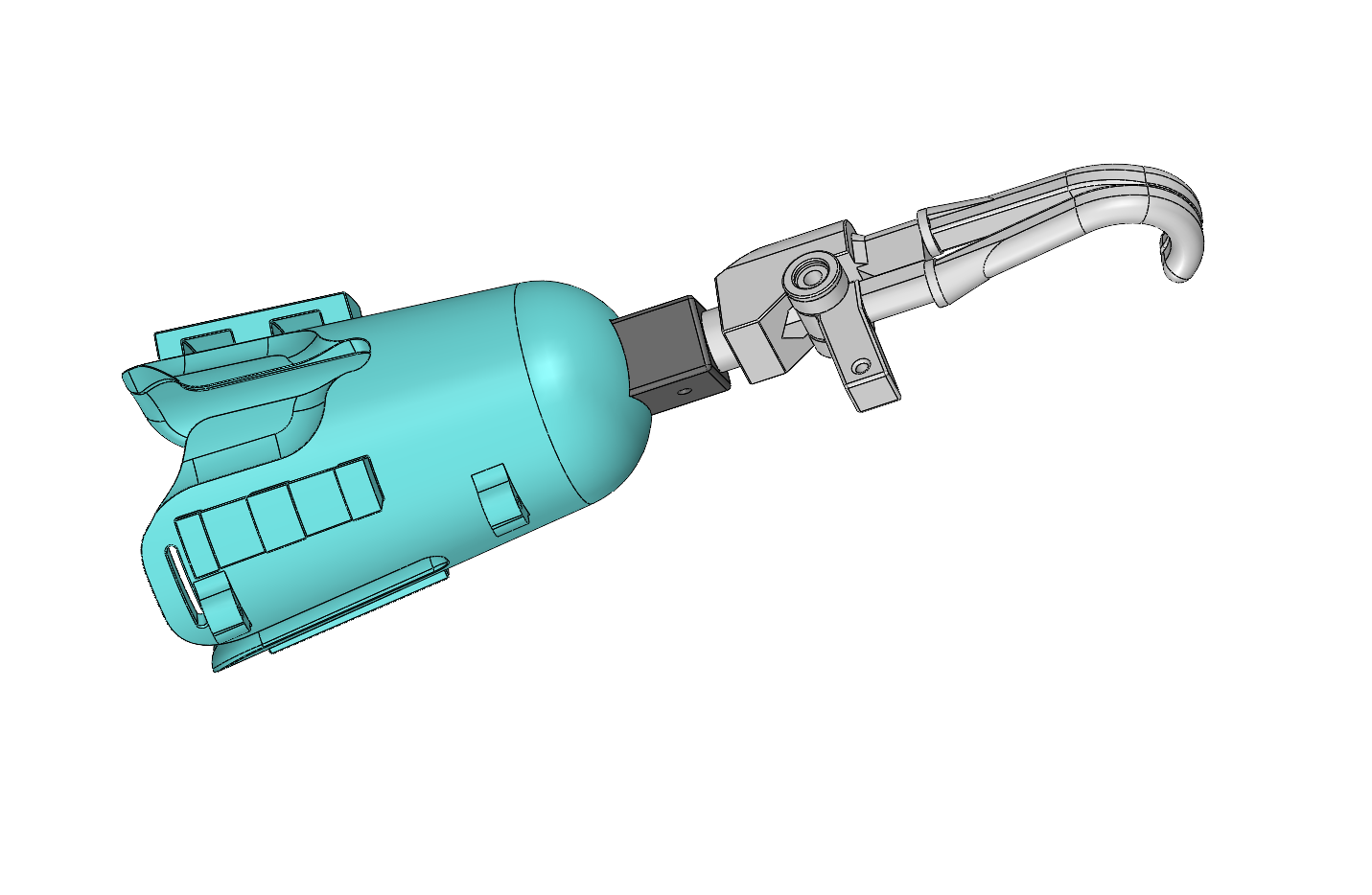
EnableUC Body Powered Hook Version 2
prusaprinters
<p><strong>Authors:</strong> Anna King, Gregory Macke, Jackson Romelli, and Lillie Orians</p><p> The body powered hook is a below the elbow prosthetic made to aid the user in pushing, pulling, grasping, and manipulating objects. The device was developed in response to the need of a more precise and functional 3D printed prosthetic option for youth performing every day activities.</p><p> </p><p><strong>Link to instructions:</strong><br>https://docs.google.com/document/d/13281-W6-YRYGgkORF4zv3KMnJTb92k0P/edit?usp=sharing&ouid=100673832100116241344&rtpof=true&sd=true</p><p><strong>Link to bill of materials:</strong><br>https://docs.google.com/spreadsheets/d/1by01Mh6XaCK4AFNxpAwo9bxICZA4PbFz/edit?usp=sharing&ouid=100673832100116241344&rtpof=true&sd=true</p><p> </p><p><strong>Device Description:</strong></p><p> The body powered hook is made up of four main parts. It can be adapted to work for users in need of both sides or one. The first system is the hooks of which there are currently two designs. The J-hook is placed on the dominant side of the user. The J-hook is designed for fine motor skills and grabbing and manipulating small objects. The it can be used to hook around and push/pull objects or it can be opened to grab ahold of objects. The second design is the rounded hook which is placed on the non-dominant side of the user. The hook is designed to complement the J-hook and is best suited to grab hold of rounded objects or larger ones that don’t fit in the narrower grasp of the J-hook.</p><p> The hook(s) is anchored into the socket interfacing block using a bolt and nut. This mechanism allows the hooks to be loosened, replaced, and for the angle of the hook to be adjusted within the confines of the cable position. The silicone grip covers slide over the end of each hook arm to provide grip to the hooks and aide in picking up objects. The hooks are made of a strong polycarbonate material that can flex slightly to not break under stress.</p><p> The second system is the socket. The socket fits over the arm of the user to comfortably hold the prosthetic hooks on the arm. The socket can be tightened by pulling on the Velcro straps which causes the leaves of the socket to flex and tighten around the arm. The socket can be anchored to the harness using one or two additional straps which attach via slits on the top of the socket. The socket is made of flexible material for increased comfort and to allow it to be tightened down by the user. The socket is the most customizable part of the body powered hooks. It is likely that the socket will need to be customized and remodeled for each unique patient. A silicone sock is slid over the arm and then the socket. This is the best found way to pad the socket for user comfort while not allowing the socket to easily slide off.</p><p> The third system is the figure eight harness. The harness fits around the shoulders of the user similar to a backpack. It connects the cable mechanism to the body and helps control the opening and closing of the hooks using the movement of the user. The harness is made of nylon straps and is held together with adjustment clips so that it can be sized to the user.</p><p> The fourth system is the cable mechanism. The cable mechanism consists of a combination of nylon strap and metal cable running from the middle of the back to the end of the hook. It runs through the tricep guide and guide holes on the socket. The cable mechanism maintains a fixed length and as the user pushes forward with their arm it creates tension which pulls on the mobile side of the hook to open it. The cable mechanism is made of metal hardware components, colored nylon straps (different colors help with strap management), Teflon tubing, and a flexible TPU tricep guide.</p><p> </p><p><strong>Printing Settings:</strong></p><p> Please see the attached or linked instructions document to find the suggested material and print settings for each individual part. These specified materials, perimeters, infill percentages, support placements, and orientations were tested and optimized for the functionality of the prosthetic.</p><p> </p><p><strong>Post-Printing:</strong><br> Please see the attached or linked instructions document to find the step by step assembly instructions for each part and how to properly put the device together. Within these instructions, you will find tips and tricks to put the device together easier and assembly points to avoid common pitfalls.</p><p> </p><p><strong>How We Designed This:</strong></p><p> This body powered hook was developed around the patient case of an adolescent boy who lives in a remote village in the mountains of Bolivia. Our patient had both of his arms amputated below the elbow following a dynamite accident and leaving him without upper limb functionality and the ability to do everyday tasks we take for granted. Our team sought to return his independence and bring him a higher quality of life by building a resilient and functional prosthetic. Over the course of a year, our volunteers designed the parts on chalk boards and brought them to life in solidworks, testing, and eventually building two versions of the device dialing in the physical design, print settings, and usability to optimally serve the user. The result was a durable, functional, and comfortable prosthetic that allowed the user to not only perform the basic tasks as intended but amaze us all allowing him to contribute to his community and bring his hobbies in ways we could not foresee. We believe that this device can be used across the world to help more people in need of a functional and low cost below the elbow prosthetic option and hope it can be built upon and improved in the future. A special thanks to our team of volunteers that worked tirelessly to make the project a success and continue to improve it's capabilities for those in need!</p>
With this file you will be able to print EnableUC Body Powered Hook Version 2 with your 3D printer. Click on the button and save the file on your computer to work, edit or customize your design. You can also find more 3D designs for printers on EnableUC Body Powered Hook Version 2.
